
Physiology News Magazine
Imaging tools and freebies
News and Views
Imaging tools and freebies
News and Views
Keith Siew
University of Cambridge, UK
https://doi.org/10.36866/pn.95.12
Unbeknownst to many there is a veritable treasure trove of free online resources and tools for those who engage in biological imaging. The list below is hardly exhaustive, but I’ve endeavoured to share with you the ones that I’ve found most useful in my own work, and that will hopefully save you both time and money!
Fluorescence Spectraviewer & Stain Your Own Cell
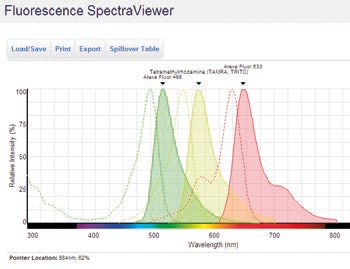
www.lifetechnologies.com/uk/en/home/support/research-tools.html
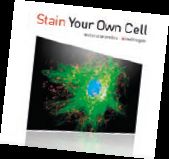
Two extremely useful tools to help with experimental design are offered free online with Invitrogen (Life Technologies). The Fluorescence SpectraViewer allows you to check compatibility of your fluorescent dyes with one another to prevent potential overlap and bleed through. You can also determine what dyes may be suitable for your imaging set-up with the excitation/emission settings. The cell stainer is great for getting an idea of what subcellular structures you may want to counterstain and informs you what reagents are suitable for live or fixed cell purposes.

http://imagej.nih.gov/ij
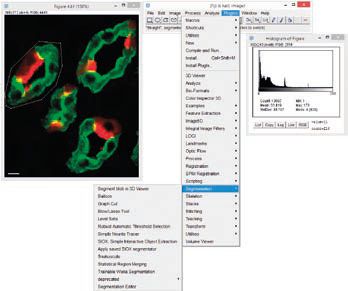
ImageJ is a powerful, free, scientific, Java-based image processing and analysis software package. It is completely customisable with numerous plugins available that have been developed and are maintained by an active research community. Many scientists will use FIJI (Fiji Is Just ImageJ) which is an open source package based on ImageJ that comes preloaded with many bundled plugins and is slightly more user friendly (http://fiji.sc/Fiji). Both of these versions will enable you to write your own code and record macro functions to facilitate data processing and analysis. There is also a dedicated ImageJ Wiki ( http://imagejdocu.tudor.lu ) with video tutorials, how to manuals, details of all the available plugins and even a wish list of processing and analysis procedures that are in development. This is a must for every lab delving into imaging; there is little offered by expensive commercial products like Adobe Photoshop or Bitplane IMARIS that ImageJ can’t do!
The Embryonic Mouse Atlas

www.emouseatlas.org
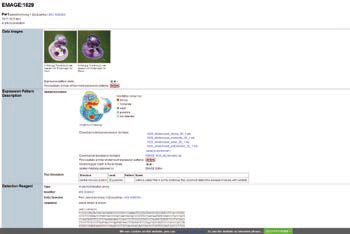
The e-Mouse Atlas (EMA) project was established to provide both a detailed anatomical model and characterisation of spatiotemporal protein expression in the developing mouse. The EMA has similar search functions, but unlike the Human Protein Atlas, the expression data are typically derived from in situ hybridisation data in publications, and it has limited data on the adult mouse.

www.ihcworld.com/
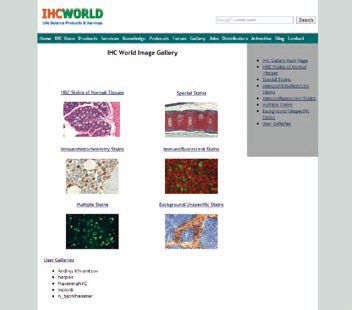
ImmunoHistoChemistry (IHC) World is an amazing repository of knowledge and a vital resource for anyone dabbling in histology/cytology. The website hosts a database of universal protocols and techniques for histological staining, buffers, immunohistochemistry, immunocytochemistry and immunofluorescences work, as well as a litany of specialised protocols categorised by the leading laboratories from which they originated. IHC world also boast a very active forum where you can troubleshoot your problems with the research community and benefit from the experience of the experts in the field.

www.proteinatlas.org
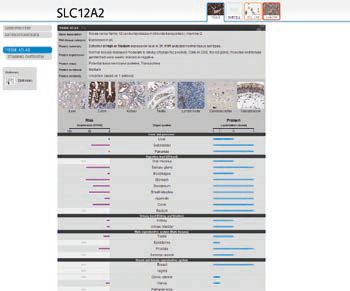
The Swedish Human Protein Atlas project was setup to allow for a systematic exploration of the human proteome using antibody-based proteomics. The atlas database will show you the location and expression levels of gene products from the subcellular to the organ level in healthy male and female tissues, various cancers and several cell lines. The atlas also characterises all the antibodies it uses, both commercial and those they generate in-house. This is an invaluable resource and always worth a quick search to check before embarking on your own studies.

www.mooc-list.com
For those of you who have never heard of a Massive Online Open Course (MOOC) before, well they do exactly what they say on the tin. The number of participants at any one time can be in the thousands, they are usually free of charge (unless you want to obtain certification in some cases) and consist of a video lecture series and often some interactive elements run by a group of tutors. MOOC List provides links to many excellent courses on histology, microscopic techniques and image analysis offered by universities such as MIT and Stanford. Quite useful for those who want to learn a new skill or brush up on their knowledge on a variety of subjects (not just imaging)!
